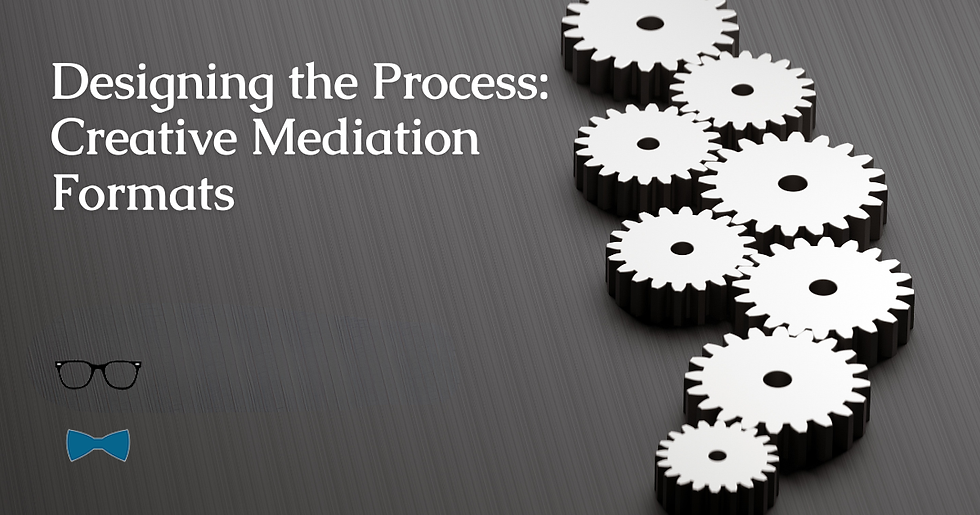When to Put All Your Cards on the Table in Mediation
- Cooper Shattuck

- Sep 2, 2025
- 3 min read
One of the most common strategic questions in mediation is whether to front-load all the terms you want in a settlement or whether to bring them in gradually as negotiations unfold. The answer is not always clear-cut—it depends on the context, the parties, and the issues in dispute. Understanding the pros and cons of each approach can help you (and your mediator) guide the process toward resolution.

The “All at Once” Approach
Some negotiators prefer to lay everything out at the beginning. Their opening demand or offer includes not only the core number but also the non-monetary terms that matter—confidentiality, payment timing, scope of release, non-disparagement, even future business considerations.
Advantages:
Clarity: Everyone knows up front what the deal must include. There are no surprises later.
Efficiency: By addressing all issues early, you avoid “deal fatigue” from reopening discussions after agreeing on the headline number.
Leverage: Sometimes smaller terms get lost if they’re saved for later. Putting them on the table at the start can ensure they’re factored into the overall value of the deal.
Risks:
Overwhelm: A long list of terms can feel like a “take-it-or-leave-it” demand and may stall progress before momentum builds.
Rigid Perception: The other side may see you as inflexible, which can harden positions.
Loss of Focus: Too many issues at once can distract from the central question of value and liability.
The “Step-by-Step” Approach
Others prefer to focus on the major issue—usually money—first, and then add terms as talks move forward.
Advantages:
Momentum: Reaching agreement on the headline issue can create positive energy for resolving smaller points.
Flexibility: With the main hurdle cleared, parties may be more willing to concede on non-monetary terms.
Simplicity: Early discussions are cleaner, avoiding bogging down in detail before basic agreement is reached.
Risks:
Deal Fatigue: Once parties feel they’ve “settled,” they may resist revisiting additional issues.
Surprise Factor: If you spring new terms late in the game, the other side may feel blindsided or misled.
Leverage Loss: By waiting, you may lose the ability to tie smaller terms to the bigger number.
The Mediator’s Role
An experienced mediator can help balance these approaches. Sometimes, it makes sense to flag important non-monetary issues early, without insisting on full resolution until later. Other times, the mediator may recommend keeping the focus tight until agreement on the main point is in reach.
Good mediators also help manage expectations. They can communicate the importance of smaller terms in a way that doesn’t derail the negotiation. They can also test whether the timing of raising certain points will move the deal forward—or shut it down.
Practical Tips for Counsel
Prioritize: Rank your terms before mediation. Which are essential, which are negotiable, and which are “wish list”?
Flag Early, Resolve Later: Consider mentioning non-monetary terms up front (“We’ll need to talk about confidentiality and timing”) but hold off on detailed negotiation until the right moment.
Avoid Surprises: Don’t wait until the eleventh hour to reveal important terms. That can kill trust.
Stay Flexible: Be willing to adjust your timing based on how the negotiation is flowing.
As with most things in mediation, there’s no one-size-fits-all rule for when to put all your terms on the table. What matters most is being strategic, intentional, and transparent enough to build trust while preserving leverage. The best negotiators—and mediators—know how to read the room and adjust the timing of terms to keep the deal moving forward.






Comments